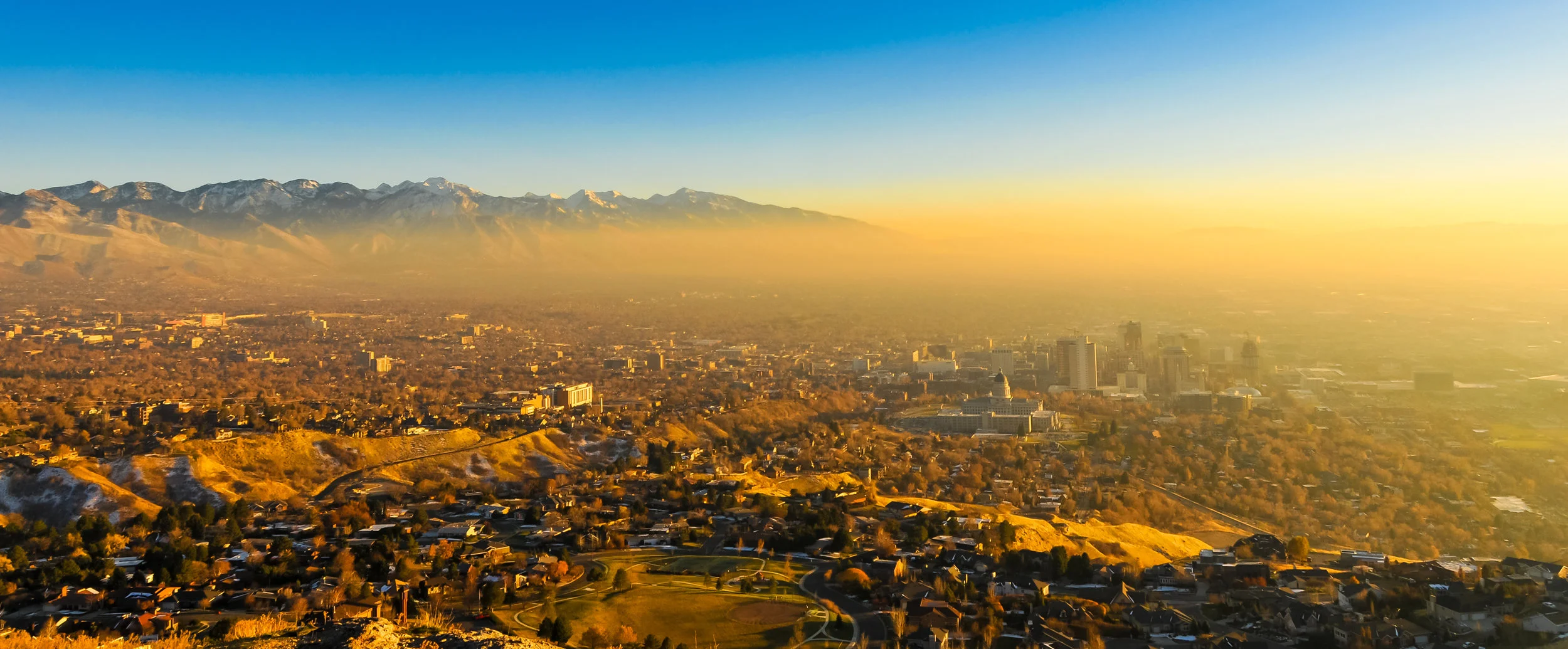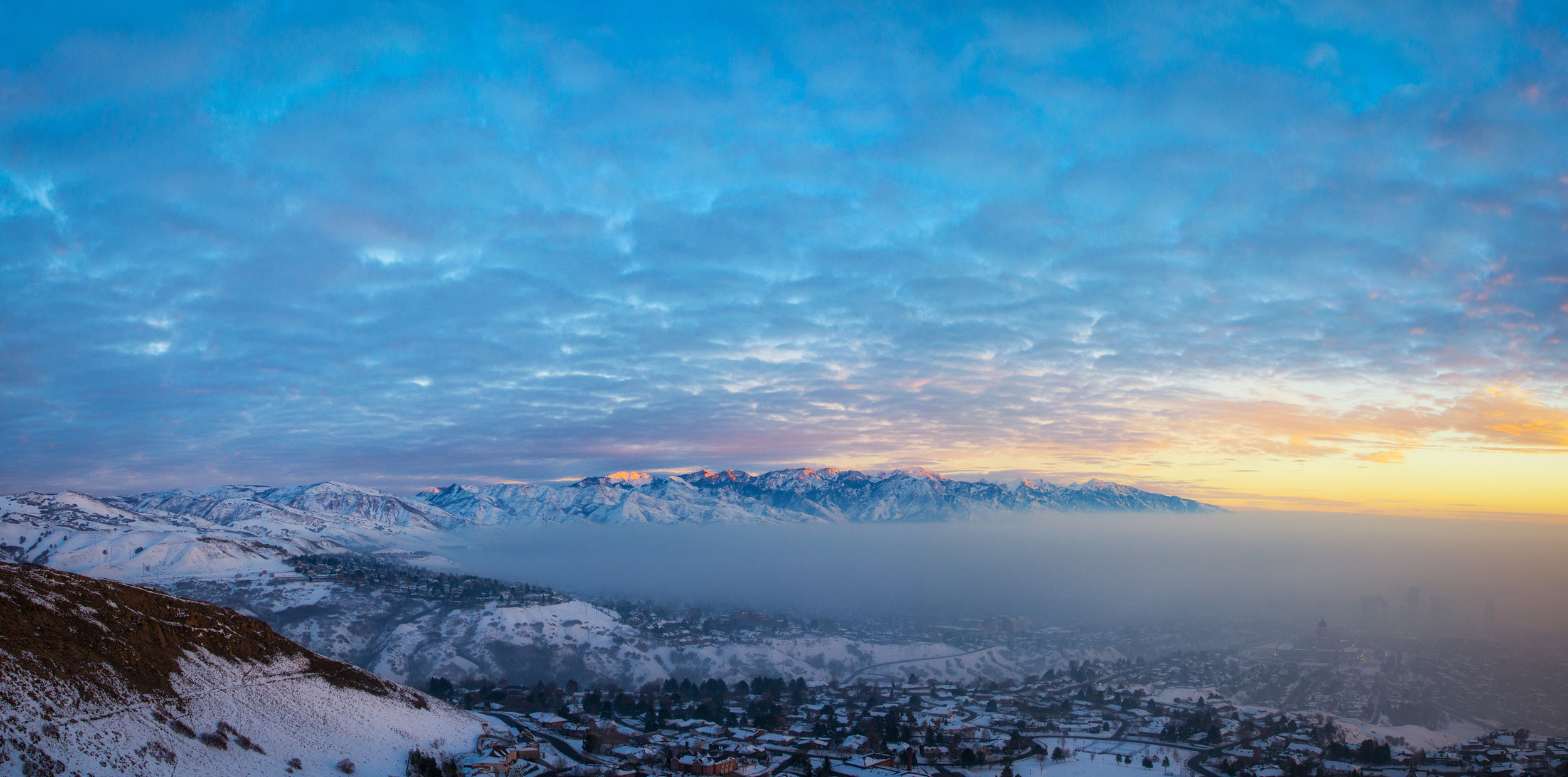The Clean Air Action Team includes representatives from health care, business, nonprofit organizations, government, academia, transportation, and more who worked to provide a set of broadly supported recommendations to improve our air quality.
Clean air consistently ranks as one of the top concerns Utahns have when considering the future. That’s why Envision Utah created YourAirYourUtah.org—a website designed to help Utahns better understand the complexities of Utah’s air quality by outlining key strategies for residents, businesses, and government to reduce emissions in a meaningful way.
We’ve worked with experts across the state to create this tool which not only offers strategies to reduce emissions, but also provides information about how much of a difference individual choices are making and connects people with resources such as grants and rebates.
The good news: many of these strategies are already in play and working. Did you know that Utah’s air is cleaner today than it was a decade ago? For the first decade of the 2000s, Salt Lake and Utah Counties saw an average of 19 days each year that we’d consider bad-air days. But in the most recent decade, from 2010 to 2019, that number dropped to 11.
From our daily choices to long-term purchases, there’s still significant work to be done to ensure our air quality keeps getting better, especially with our growing population. Visit YourAirYourUtah.org to learn more about what we can do as businesses, local governments, and individuals/families to clean up our air and keep Utah a great place to call home—now and in the future.
The Clean Air Action Team Recommends The Following Immediate Actions:
Ensure Utahns have access to low-sulfur Tier 3 fuel as soon as possible.
Accelerate the transition to cleaner Tier 3 cars. If all cars and fuel were Tier 3 by 2050 we would remove approximately 62% of mobile emissions per day from our air.
Reduce the amount of wood burning that occurs during inversion periods. Eliminating residential wood burning would decrease daily area source emissions by about 5% in 2050.
Invest additional resources in public transportation and facilities that make “active transportation” modes like biking and walking more convenient. By 2050, if we reduce the number of miles driven per capita by 10% we would reduce daily mobile emissions by roughly 8%.
Allow the Air Quality Board and Division of Air Quality to adopt rules that are more stringent than federal regulations and continue to give the Division of Air Quality sufficient budget to continue effectively achieving its mission.
Adopt a rule to require suppliers to sell only ultra-low NOx water heaters. Replacing all water heaters with ultra-low NOx models would reduce daily area emissions by about 5.3% in 2050.
Increase the energy efficiency of our existing and new buildings. Increasing the efficiency of existing buildings could reduce area source emissions by about 1.7%. Increasing new building efficiency by 50% would eliminate approximately 2.4% of our area source emissions by 2050.
Continue current efforts to reduce emissions from the oil & gas operations within the Uintah Basin.
The Clean Air Action Team Successes:
Leveraging support to convert many of Utah’s major petroleum refineries to the production of Tier 3 fuels, reducing sulfur emissions from refineries and cutting down on emissions from Utah’s vehicle fleet.
Encouraging several of Utah’s leading homebuilders to utilize thicker studs in building practices, increasing insulation and reducing heating and cooling costs for homeowners throughout the year.
Promoting the use of more efficient, low NOx water heaters in new and existing homes to reduce pollutants and energy costs.
Leading to the Provo Clean Air Toolkit project in 2015 and 2016, where tools were developed for government organizations, businesses, and individuals to understand different ways to reduce their emissions and contribute to cleaner air. Visit ProvoCleanAir.org for more information on these strategies.
Creating a pilot program to help Utah car dealers educate buyers on the air quality impacts of new vehicles. The Smog Rating Window Sticker was first displayed by Mark Miller Toyota.
Now, Envision Utah is facilitating a group called the Clean Air Implementation Team to dive into two of the largest issues that can impact Utah’s air quality :
better buildings & cleaner cars
This group will share the same premise as the original Clean Air Action Team:
To be successful, recommendations must have broad support among key stakeholders and the public.
The public has the right to choose and, when presented with good information, will make wise choices.
The role of this group is not to decide on recommendations and then educate Utahns about what was decided, but instead to frame choices and their consequences (in terms of cost and benefit) so that the public can decide the course forward.
Choices and their consequences should be analyzed and presented in an unbiased, principled way.
The Team is currently working on creating a statewide Clean Air Toolkit and a building retrofit program for efficiency and air quality upgrades.
Clean Air Action Team Members
Lonnie Bullard, Jacobsen Construction
Dr. Elizabeth Joy, Intermountain Healthcare (January 2015 – Present)
Dr. Michelle Hofmann, Medical Director, Riverton Hospital’s Children Unit(October 2013 – January 2015)
Stuart Adams, Utah Senate
Patrice Arent, Utah House of Representatives
Ralph Becker, Former Mayor, Salt Lake City
Bryce Bird, Department of Environmental Quality
David Brems, GSBS Architects
Rebecca Chavez-Houck, Utah House of Representatives
Jeff Edwards, Economic Development Corporation of Utah
Robin Erickson, Utah Clean Cities
Ryan Evans, Salt Lake Chamber
Matt Eyring, Vivint
Robert Gillies, State of Utah Climatologist
Andrew Gruber, Wasatch Front Regional Council
Susan Hardy, Mountainland Association of Governments
Roger Jackson, FFKR Architects
Ron Jibson, Questar Gas
Linda Johnson, Utah Air Quality Board
Terry Marasco, Utah Clean Air Alliance
Ben McAdams, Mayor, Salt Lake County
Dan McArthur, Mayor, St. George City
Nancy McCormick, AARP Utah
Robert Paine, Chief Division of Respiratory, Critical Care and Occupational Pulmonary Medicine, University of Utah School of Medicine
Angelo Papastamos, Utah Department of Transportation
Edward Redd, Utah House of Representatives
Robert Rolfs, Utah Department of Health
Steve Sands, Kennecott Utah Copper
Joseph Shaffer, Tri-County Health Department
Matt Sibul, Utah Transit Authority
Amanda Smith, Department of Environmental Quality
Peter Stempel, Stempel Form PC
Lowry Snow, Utah House of Representatives
Charles Sorenson, Intermountain Healthcare
Kathy Van Dame, Wasatch Clean Air Coalition
Vicki Varela, Utah Office of Tourism
Ted Wilson, UCAIR
Sarah Wright, Utah Clean Energy





